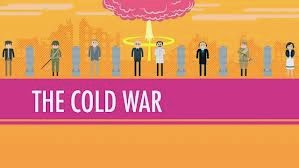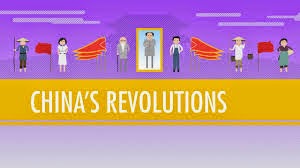Name________________________________________________________________ Per.______
Robert
W. Strayer
Ways of the World: A Brief Global History with
Sources
Chapter 22, The Rise and Fall of World Communism, 1917-Present, Study Guide (Original: pp. 659-688; With Sources: pp. 1029-1058)
Global
Communism: Comparing Revolutions as a Path to Communism
1. Where did communist
governments exercise state power and various degrees of influence besides the
Soviet Union, China, and Eastern Europe during the 20th century?
2. Identify the major
differences between the Russian and Chinese Revolutions.
3. Why were the Bolsheviks able to ride the
Russian Revolution to power?
4. How did the Chinese Communist Party adapt its
ideology and strategy during its long struggle to power?
Building
Socialism in Two Countries
5. In undertaking the push for modernization, how were China and Russia able to construct a socialist societies?
In economic terms?
6. What changes did communist regimes bring to
the lives of women?
7. How did the
collectivization of agriculture differ between the USSR and China?
8. What were the
achievements of communist efforts at industrialization? What problems did these achievements
generate? (Results of The Great Leap Forward and The Cultural Revolution)
9. Explain the Great
Purges.
East versus West: A Global Divide and a Cold
War
10. In what different ways
was the Cold War expressed?
11. How did the United States and the Soviet
Union court third world countries?
12. In what ways did the
United States play a global role after World War II?
13. Describe the strengths
and weaknesses of the communist world by the 1970s.
Comparing Paths to the End of Communism
14. Explain the economic
and moral failures of the communist experiment. (Could the USSR match
the West in quality and availability of consumer goods?)
15. What was the result of the reforms instituted
by Deng Xiaoping?
·
Socially:
·
Politically:
·
Economically:
16. Describe China after
communism.
17. How did the end of
communism in the Soviet Union differ from communism’s demise in China?
18. Impact of glasnost
on the Soviet allies in Eastern Europe?
Reflections: To Judge or Not to Judge: The
Ambiguous Legacy of Communism
19. (On the one hand…On the
other hand…p. 688)
Explain
the significance of each of the following:
Berlin Wall—
Comintern—
Warsaw Pac—
McCarthyism—
Guomindang—
Collectivization of agriculture—
Great Leap Forward—
Great Proletarian Cultural Revolution—
Deng Xiaoping—
Perestroika—
Glasnost—
Additional Questions:
1. Inflation mounted; consumer goods were in short supply, &
ration coupons reappeared; many feared the loss of their
jobs. This describes which country country following its
“glasnost” reforms of the late 1980s.
2. Following Mao’s death in 1976, who emerged as China’s
“paramount leader,” committed to ending the periodic
upheavals of the Maoist era while fostering political stability
& economic growth.
3. Who was the Soviet leader and reformist leader that came to
power in 1985 intending to revive & save Soviet socialism from its accumulated dysfunctions. These
efforts, however, only exacerbated the country’s many difficulties & led to its political disintegration on
Christmas Day 1991.
4. What was the name of the last Tsar of Russia who was forced to abdicate the throne following a series
of internal & international crises following WWI?
5. The Russians exit WWI & then institute communism after their revolution. Compare that to the Chinese
Communist Revolution of 1949 in regard to Chinese involvement in WWII?
6. The U.S. & Soviet cold war rivalry spanned the globe. Using military & economic aid, educational
opportunities, political pressure, & covert action, both sides courted third world countries just
emerging from colonial rule. Cold war fears of communist penetration prompted U.S. intervention,
sometimes openly & often secretly in many corrupt & authoritarian regimes. Which countries did the
U.S. support?
7. Who was the US President & Soviet Premier leader during the Cuban Missile Crisis?
8. What ended the Cuban Missile Crisis? Who won?
9. Soviet & US leadership experienced similar frustrations with cold war conflicts abroad. For a full
decade, between 1979-1989, Soviet forces intervened militarily & were soon bogged down in a war they
could not win. Ironically, same country that the U.S. has fought its longest war after 9/11, which is?
10. What is the Iron Curtain?
11. Which country - USSR or People’s Republic of China - best compares to the French Revolution in terms of violence against its own people?
12. What were the “Speak Bitterness Meetings” in China? Why were they held?
13. Compare the role of women in both China & USSR. How did the feminist movements differ?
14. What was the impact of glasnost on Eastern Europe?
15. What was the end result of Mao’s 2 campaigns: the “Great Leap Forward” & the “Cultural Revolution”?
16. How did the USSR & China react to the emergence of privileged bureaucratic & technological elite in
communist societies as a consequence of industrial modernization.


No comments:
Post a Comment